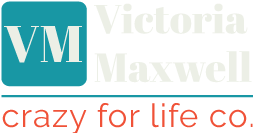Healing and humour come together when we take our own pain and twist it, look at it differently, and adjust the light on it. In other words, we “make light” of it. There are literal physical healing benefits of it. (I list them in my 2017 post “Laugh. Jest for the Health of It.”)
I’ve used humour for decades in my solo shows to not only make it easier for people to talk about mental illness but as a healing tool for myself and the audience. To create a sense of belonging, hope, and optimism.
Part of using humour to heal is we must give ourselves permission to “slay our sacred cows.” Sacred cows are those things we think are too proper to joke about, perhaps too painful.
It might mean taking what feels like a risk, but that’s where the comedy gold is. You don’t have to change or manufacture a new style of humour that isn’t yours. To slay your cows, you don’t need to be “brashy” if that’s not your personality. But touching on taboo subjects does mean you can’t shy away from your natural sauciness. And believe me—we all have a little sauciness in us. It might be buried or perhaps subtle but it’s there. Be bold and brave, my friend. Be daring with your funny bone. You’ll find it’s incredibly freeing.
In order to shift our limiting perspectives of mental illness, old paradigms must be dismantled. Irreverent humour does that. Slaying our sacred cows does that. Irreverent humour shakes up the status quo and the preciousness of the politically correct.
How to slay a sacred cow without harming any animals during the process.
Again, your sense of humour doesn’t have to be a stand-up comedy routine. It’s about allowing yourself to see things differently, bringing smiles and brightness into areas that are otherwise dark.
Let’s use experiences and opinions regarding mental health, recovery, and therapy.
You can, of course, focus on any subject, but let’s take this one and run with it. If this subject is too close to home, choose another and run with that one. Take care of yourself and don’t inflict harm on yourself or have a case of “premature joculation”—joking about painful things prematurely. (See below for full description and examples about Premature Joculation.)
Learn where your “funny bone” boundary is. Some people have no trouble revealing personal stories; others are more comfortable making more general statements about situations.
Try the following:
Brainstorm, using a blank sheet of paper, about mental illness, mental health, the mental health system, recovery, or anything else related. As you brainstorm, think in terms of writing down: article continues after advertisement
- “Juicy bits,” things that make your face frown or smile, that you love or hate
- Your “pet peeves”
- Issues that are important to you
- Stories that you have a burning desire to tell
- Anecdotes you remember (short experiences), observations, or opinions you have
- Funny songs or rhymes you know
Some of my favourite “juicy” bits:
- Psychiatric labels
- Psychiatrists and my sessions with them
- Therapy groups or self-help groups
- Medication: side effects, names
- Hospital stays
My motto is: Have fun and funniness will happen.
Pick from that brain dump, something that you’re excited about (and have enough distance from), and try the following. Have fun and funniness will happen.
Start with your truth. Be bold. State your belief, your viewpoint, and then twist it like silly putty:
- Exaggerate an aspect
- Embellish
- Play with the words and terms
- Use elements of surprise and irony
Tools and examples to help you slay your sacred cows:
If you’re telling an anecdote, exaggerate the good and bad elements of the characters and story (in other words fib). Humour is about exaggerating the truth.
Embellish and exaggerate:
- “I finally like taking my medication now because they match all my outfits.”
- “I’m on Epival and Zoloft and many other planets.”
Make up a diagnosis for psychiatrists or healthcare providers you didn’t like. Yes—I know this one goes against one of my rules for PJ (making jokes at the expense of another). But there are always exceptions to the rule. article continues after
- B.F.E.D. Big Fat Ego Disorder
Top ten lists: For example, ten reasons to go back to the psych ward:
- The drugs are better
- I get more rest
- I don’t have to clean the toilet
Do a play on words:
- I made a “commitment” to stay at “club medication”
Create acronyms:
- Victoria Maxwell BFA, BPP—Bachelor of Fine Arts, Bi-Polar Princess
- LSD—Losing Simple Discernment
From David Granirer (humour expert) Three Reasons to Avoid <Blank>.
- Reasons to Avoid My Psychiatrist: He thinks I’m crazy.
What are your top ten lists? What kind of invented diagnosis can you create? What are your stories that you can tell and laugh about? Find a topic that makes you zing. Tell a trusted peer what you find funny, or create a top three list with them. Have fun. Keep it safe and keep it kind.
Good luck tickling your funny bone and lighting up the world of mental health with your laughter and humour. It’s a public service.
*Premature Joculation, or P.J., is a highly treatable condition. It is when laughing at or joking about happens at inappropriate stages of healing or near a recent tragic current event. It may occur as an avoidance or denial tool.
Examples of some P.J. are:
- making a joke about someone else’s recent pain
- making a devaluing sarcastic remark about your own recent crisis
- laughing at someone else’s expense
- making racist, sexist, homophobic, ageist, or religious jokes
© Victoria Maxwell

